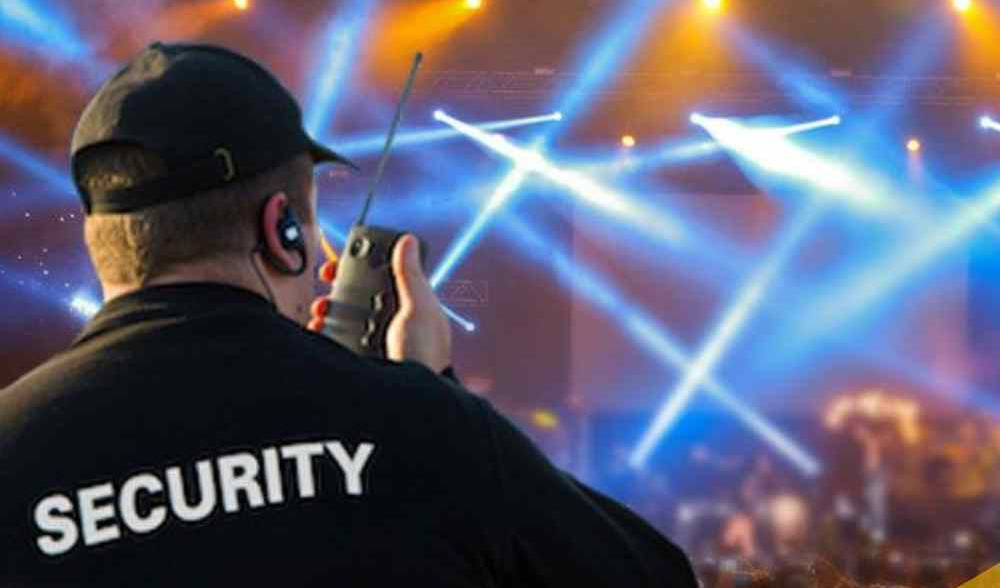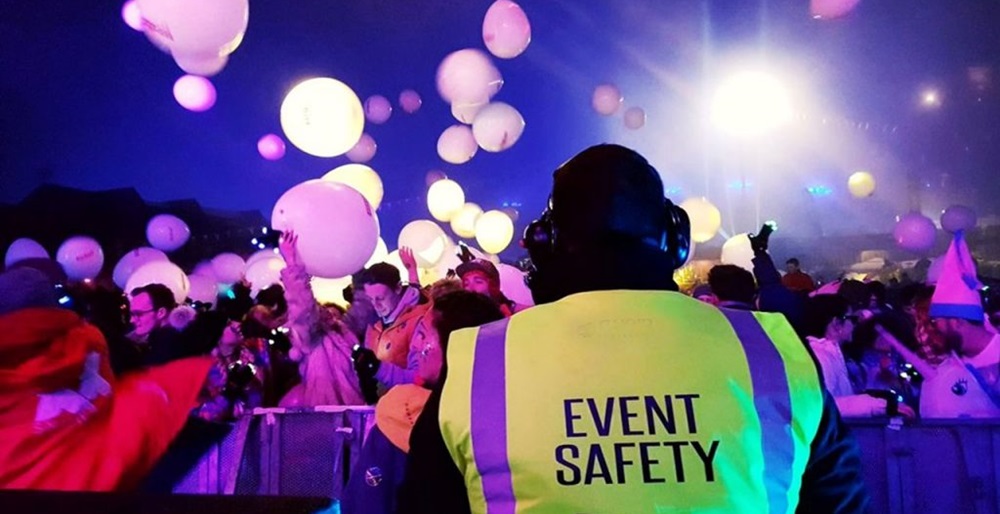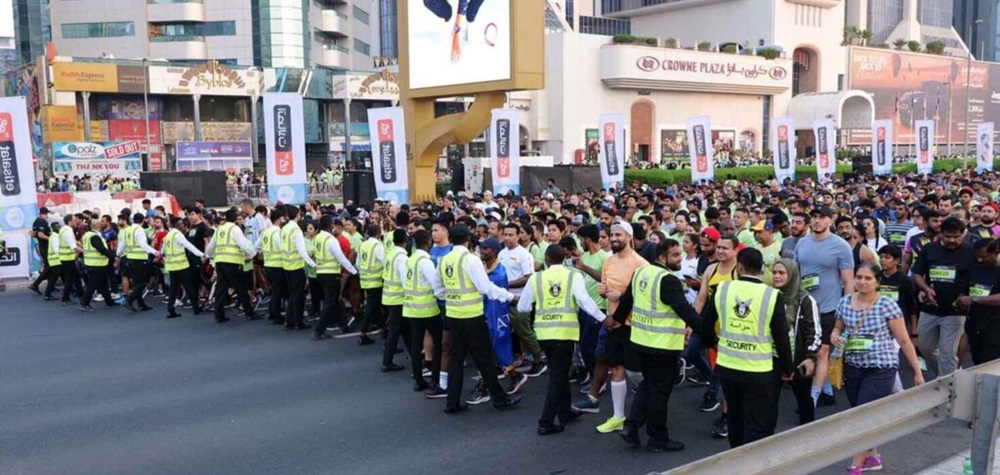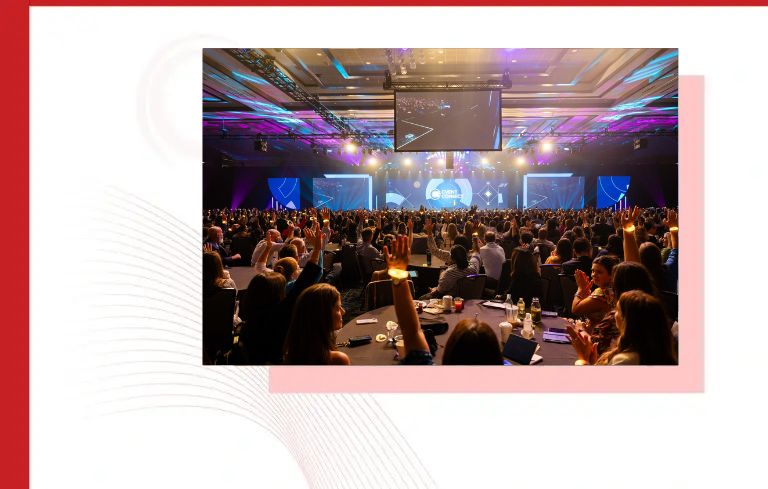Prioritize safety and security at your events with expert crisis management strategies. Discover effective measures to ensure the well-being of attendees and the seamless handling of emergencies for successful event execution.
Safety and Security in Events: Tips for Events Security
Crisis
A sudden emergency situation which threatens to harm the organisation and its management known as crisis management. According to recent studies, 53% of meeting and event organisers don’t have an event-specific crisis management plan in place. The Essential Guide to Safety and Security provides nearly 400 recommendations for safety and security best practices for meeting and events and may be adapted for meetings large or small.
Difference Between Security & Safety
Security:

- Protection against external threat
- It is a physical aspect
- Deliberate threat
- Broad Coverage (border, etc.)
Safety:

- Protection against internal threat
- Emotional Aspect
- Unintended Threat
- Narrow Coverage (Building, etc.)
Some important key points include:
- Risk, Threat, and Vulnerability Assessment
- Event Safety and Security Planning
- People Movement and Management
- Emergency Action Planning and Crisis Management
- Business Continuity, Resilience and Recovery
- Staff Management/Performance, Training, Coordination and Development
- Technology/Information Management and Security
OVERVIEW –
I. THE PRE-PLANNING PHASE
- Determining and Acquiring the Security Workforce
- Crowd Control
- Transportation and Traffic
- Surveillance and Observation
- Fire, EMS, Medical Care & Emergency
- Response
- Explosives Threats
- Severe Weather
II. THE PLANNING PHASE
- The Details
- Security Technology
- Social Media
- Event Staffing
- Local Officials
I. THE PRE-PLANNING PHASE
The pre-planning phase of event management is about gathering information and intelligence on the event and the venue. During pre-planning, you are conducting a proper risk, vulnerability and threat analysis, remembering that
each event is unique and requires its own assessment.
- Before you make decisions about how to mitigate particular risks, you have to understand those risks and ask yourself:
- What are the potential vulnerabilities of the space and/or the event itself ?
- Where is your information about these vulnerabilities coming from?
- Social media
- Local law enforcement
- Other venues in your network
- The news
- Do you have access to services that identify risks and threats shared publicly on
social media?
(a) Determining and Acquiring the Security Workforce
- Most event organisers will hire a professional security firm to provide services prior to and during their event.
- The security firm should be responsible for providing an adequate number of qualified security personnel.
- If staffing questions arise, it may be prudent to obtain the opinion of your local law enforcement agency to assure adequate resources are being deployed.
- In estimating the number of security personnel needed for a special event, it is always best to err on the side of having too many rather than not having enough.
- A significant show of force can often deter problems before they begin or calm dangerous disturbances.
- It is important to keep the following concerns in mind when selecting a security service:.
(b) Crowd Control:

- Crowd control practices are critical to the success of your event for comfort and safety. Inadequate security measures could result in accidents like slips, trips, and falls; fights; child separation from their parents; and patron injuries from the crowd.
- Consideration needs to be given to paths of travel for access to and egress from the event.
- It should also be given to how patrons will move from one activity to another during the event.
- One-way traffic patterns and temporarily stopping opposing foot traffic are often helpful. Access, egress and travel paths should be well delineated, smooth, and free of trip/slip hazards.
- Fencing, barricades, ropes, or uniformed security staff may be helpful in delineating travel paths.
- These practices should also be employed to keep patrons from travelling through areas that present hazards such as uneven ground, traffic, equipment or other concerns.
(c) Transportation / Traffic:
- In developing security plans for major special events, all transportation modes
that may have an impact on the security of the venue need to be reviewed. Working with transportation officials, traffic engineering, fire/EMS, and others, decision may be made to close streets, re-route traffic patterns, close transit stops, and the like for security purposes. - Transportation and Traffic In developing security plans for major special events, all transportation modes that may have an impact on the security of the venue need to be reviewed. Working with transportation officials, traffic engineering, fire/EMS, and others, decision may be made to close streets, re-route traffic patterns, close transit stops, and the like for security purposes.
(d) Surveillance and Observation.
The use of security video cameras has increased at special events because Cameras can double as logistical and security tools as well as an aid in claim defence.
- Staff can monitor the cameras to detect and record attempted security breaches and also to observe the movements of dignitaries, performers, or speakers to ensure the timing of events.
- Security personnel can also use video cameras to identify someone who commits a crime (spectator, protester) and arrest them later, when it might cause less of a disruptive scene.
- Digital videos are stored and searched long after the event. In addition to using video cameras, many law enforcement agencies position officers on rooftops or other high vantage points to observe crowd behaviour during special events.
(e) Fire EMS, Medical Care & Emergency Response
- Fire and emergency medical services (EMS) play a critical role in supporting security and public safety at special events. Additionally, hospital medical care must be adequately available if needed. Fire and EMS agencies will have specific needs at the event, such as stand-by and staging areas for fire apparatus, ambulances, and special operations vehicles (such as hazmat vehicles); access to critical infrastructure, e.g., sprinkler connections, fire hydrants, and utility panels; and entry and egress routes for emergency vehicles.
- Hospitals should also be integrated into the overall security plan so they have critical information on anticipated threats and estimated numbers of attendees. Public health agencies should be included in planning sessions to assist them in preparation for potential hazards or WMD situations that may impact the community.
(f) Explosive threats:
- Special event security plans need detailed procedures for dealing with improvised explosive device (IED) threats and suspicious packages (which may include unattended items).
- Most law enforcement and fire/EMS agencies already have such protocols. IED threats directed at special events often occur by telephone, sometimes by mail.
- Telephone operators involved in the event should receive training on protocols for talking to the caller (e.g., obtain information on exact location of bomb, timing for detonation, record the conversation, pay attention to background noises, etc.) and notifying the designated security plan incident commander. Care must be taken not to turn the incident into a panic situation.
(g) Severe Weather:
- Severe weather, such as wind storms, heat waves, tornadoes, rain, hail, or lightning, can dramatically impact outdoor events.
- High winds and lightning can be deadly. Procedures need to be in place to monitor the weather and implement protective actions as necessary.
- A command structure must be in place that allows key individuals to decide when an event should be suspended and when emergency procedures such as evacuating to shelters or other protected areas are necessary.
- Access to adequate protective structures is also important.
II. THE PLANNING PHASE
- This phase includes thinking about technology that can be used to help combat your biggest risks as well as the type of training your staff needs to ensure they are best able to protect attendees and the venue. Additionally, this phase is where you plan how you will work with local officials in the event of an emergency.
- Above all, the planning phase is about asking and operationalizing the hard questions that will help drive you towards a targeted plan. These may include:
- Are the risks you’ve identified addressed with people, policy, technology or all three?
- Is your strategy going to be visible or invisible to attendees?
- How are attendees arriving at the event and/or participating, and what is the impact on vehicle and pedestrian traffic?
- Have you coordinated traffic with local public safety?
- Where will attendees enter the venue and how will they exit?
- How are you communicating with the attendees before or during the event? Through a website, emergency notification system, signage, public-address system, social media or mobile app?
- Are the signs clear, and is the lighting adequate?
Security Technology
- When facing the more daunting questions that don’t always have a clear solution, it’s important to remember that today’s security technology is impressive and more advanced than at any other time in our history.
- For example, cameras are now far less expensive than in years past, as well as being remote controlled and portable, and some even come with facial recognition capabilities, license plate readers, and the ability to see in the dark.
- Advanced access control and ticketing technology is another security technology frontier transforming the industry, not only giving you greater control over who can enter and re-enter but also greater fidelity in identifying contraband and weapons.
- This type of technology helps you to eliminate human error, even with the most seasoned security staff on hand.
Social Media:
The technology potentially having the largest impact on event security, and certainly on our lives, is social media.
- Social media has become an imperative issue for security professionals and one that can’t be disregarded during any phase of event security planning. It is the largest spoken language in the world, with an excess of 1 billion public posts made worldwide every day.
- It is the go-to communication tool for sharing thoughts, pictures and videos in real-time throughout people’s days, evenings and, of course, the events that security professionals have been charged with protecting.
- So how do you leverage this information to help keep event attendees (and
staff) safe?
Event Staffing for Safety and Security in Events
- Only technology is not enough for the security of an event, so one of the most important aspects of risk mitigation and security planning is staffing.
- Whether you in-source or out-source, you’ll need to recruit a team with the right skills, attitudes, and knowledge to ensure a successful security operation. Your security staff will need to know a plethora of things, from who they report to through their post assignments to where the operations centre and command post are located.
- In some instances, they may require additional, specialised training, such as walk-through or handheld metal detectors, X-ray inspection equipment, or cameras. A trained and educated staff can truly make all the difference, but it is important to remember that if the size of the venue creates significant challenges for sheer volume of staff, your organisation may need to use other security systems and technology as a force multiplier.
Local Officials:
- Finally, if you’re not including local public safety officials (police, fire, and EMS) as part of your event staff, you need to ask how you are addressing communication needs both in the field and in the command post.
- Are you deploying two-way radios, mobile phones, satellite phones, etc.? Are fire and rescue teams on standby or on-site?
- It is important to think through these matters before the event and have resources identified and/or staged well in advance.
III. THE OPERATIONS PHASE
- The big day has arrived and it’s time to put plans into action.
- Through the pre-planning phase, you’ve identified risks, vulnerabilities and hazards.
- In the planning phase, you’ve organised mitigation strategies for these risks, vulnerabilities and hazards that may combine human resources with technology.
- You’re organised in the command post and have communicated and/or conducted a safety briefing for all attendees.
- You are now ready to tackle what’s coming at you during the event and to respond with confidence.
IV. THE RECOVERY OR REVIEW PHASE for Safety and Security in Events
Assuming all went as planned, or as close to plan as possible, the recovery or review phase is a time to ask the question, “What will we do differently next time?” Regardless of significant issues that may have arisen, this part of the event management process is always about learning forward and not blaming in reverse.
- Pulling together the team and debriefing each aspect of the plan is an important step to understanding what was more or less effective for the event and/or the venue.
- Whatever the scale, a structured and straight-forward security planning process can help you ensure the ability to bring order to chaos in those moments when things go wrong, not just when they go right.
📞 Call: +91-9810617123
📧 Email: sales@hire4event.com
🌐 Visit: www.hire4event.com
📍 Address: 214, ABC Tower, Sec-135, Noida-201301





